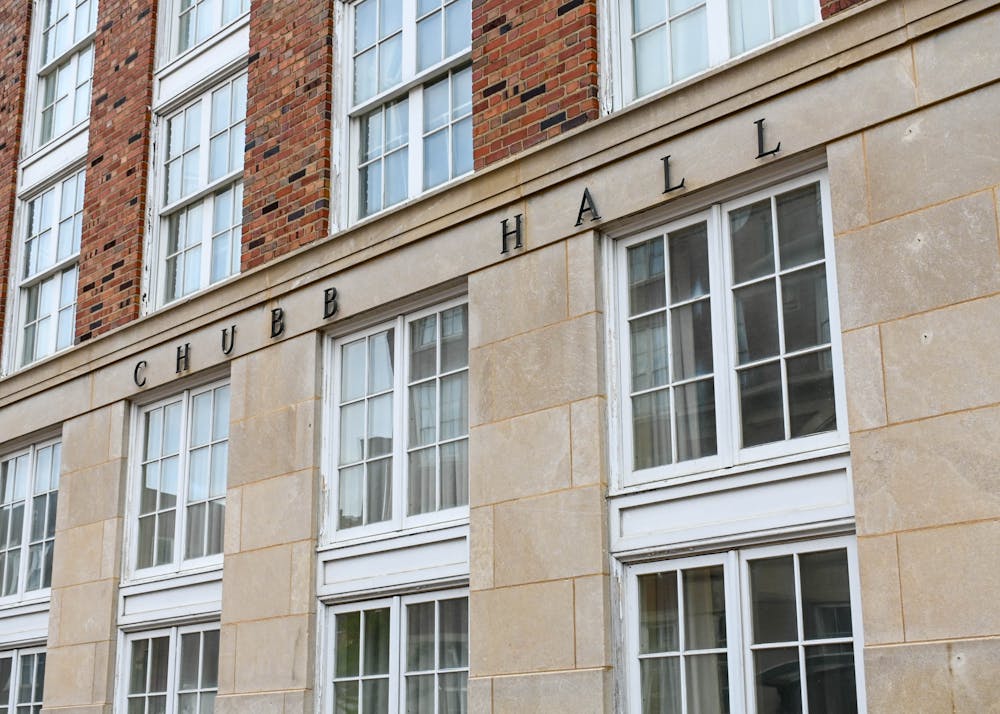Correction Appended: A previous version of this article reported that Candace Boeninger said the application process would take about an hour and the Department of Education press release wrote that some people will see only 18 questions and others might see 46. The current copy reflects the correct attribution.
Students planning to attend college and current college students usually apply for federal student aid which typically opens Oct. 1, but due to changes and updates to the application process this year, the form opened nearly three months later than usual.
The Free Application for Federal Student Aid, or FAFSA, soft-launched an updated application Dec. 31, according to a previous Post report.
The form has been available 24 hours a day since Jan. 8, according to a Department of Education press release.
According to the release, the financial aid process was simplified to cut down on questions, and it should take applicants about an hour to complete.
Application time varies by individual, and while some may see as little as 18 questions, others might see the full 46 – previously being 108 questions – Ohio University’s Vice President for Enrollment Candace Boeninger said.
The university suggests students fill out the form by Feb. 15 — the first-priority deadline — to be considered for the FAFSA-related awards due to its limited funding, according to a university press release.
One change to the form is the connection with the IRS; previously, it was optional, Boeninger said, but now it’s required. Students have to consent to an IRS data transfer to be eligible to receive financial aid which transfers the data directly into the application, she said.
Another change is the change from Expected Family Contribution to the Student Aid Index, or SAI. The SAI is a scale, rather than a dollar amount, to more accurately reflect the way information is used by institutions for FAFSA, she said.
“Despite the soft launch challenges, some families have already noticed and appreciated important differences,” Boeninger wrote in an email. “The FAFSA user experience has been significantly simplified and streamlined.”
However, some students have mixed experiences. Some had longer application times during or around the soft-launch, while others have seen the expected application time.
For applicant Allison Seiter, a freshman studying marketing, the application took between 1.5-2 hours to fill out; however, it actually took her less time than last year.
“I feel like we kind of already knew what we needed and (what) to have with us when we filled it out,” Seiter said.
While Seiter did not have many issues accessing FAFSA, that was not the case for other students.
Olivia Bellamy, a freshman studying marketing and entrepreneurship, tried filling out the application the day after the form was available to students, but she could not access it. She eventually got her FAFSA to work around a week and a half after it was made available.
“We would check it every couple days, and then when we looked at it one day, it let us log on,” Bellamy said.
Once she could access the form, she and her mom filled their portions out and sent it to her dad, who also had trouble accessing it until Tuesday.
Bellamy said she took about 5-7 minutes to fill out her portion, but it took her mom 20 minutes because of the financials.
“I thought it was pretty easy,” Bellamy said. “It didn’t take me that long to fill it out for my portion. My mom did fill out all the financials, and that took longer, but it really wasn’t that big of a hassle.”
Hayley Mitchell, a freshman studying journalism, got the application done all in one sitting with help from her dad. She said her part took about 10-15 minutes, and her dad’s section took about 30-45 minutes.
The pair didn’t have any trouble with the website while filling out the form.
“A lot of people are like, ‘Oh, it's going to take two hours to fill out FAFSA,’ but my dad is also very organized,” Mitchell said. “It doesn't surprise me that he just had everything that he needed at the touch of his fingertips, and it wouldn't surprise me if that's why he filled it out so quickly.”
Boeninger said universities won’t have access to student’s FAFSA information until the end of January.
“Given the scope and scale of changes, it’s important that we proceed carefully in these steps, which are expected to take several weeks, and are, of course, subject to any changes in the timeline by the Department of Education or by Oracle, the provider of our student information system,” Boeninger wrote in an email.
The university expects to have current students’ aid packages available by April, a few weeks later than usual, she said. Prospective students should receive aid packages sometime in March; non-merit-based scholarships that don’t rely on FAFSA were given at the typical time, Dec.1.
The university also announced to students via CatMail that it is hosting a FAFSA information session at 3 p.m. Jan. 25 in Schoonover Center, room 145.






